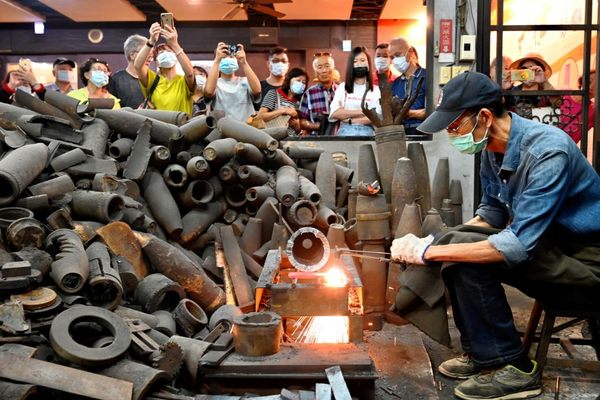The Turkish Roots of Swedish Meatballs
Thank the warlike King Charles XII for your IKEA lunch.

Last week, Sweden’s official Twitter account tweeted out a brief but momentous statement: “Swedish meatballs are actually based on a recipe King Charles XII brought home from Turkey in the early 18th century. Let’s stick to the facts!”
The revelation provoked strong reactions. Along with pop music and clean, minimalist design, tasty meatballs slathered in gravy and lingonberry jelly seem as Swedish as the blue-and-yellow flag. But there’s a very strong case for this counterintuitive origin story: The Swedish dish now enjoyed worldwide likely traces back to the travails of Swedish King Charles XII, who spent years in the Ottoman Empire (which included modern-day Turkey).
Charles XII was an unlikely food ambassador, to say the least. After gaining the throne in 1705 at the age of 15, he cared little for the good things in life. Instead, he was laser-focused on defending the borders of his inherited empire. After defeating the joined kingdoms of Denmark-Norway and Saxony-Poland-Lithuania, he turned his attention toward Russia and achieving a decisive victory over his enemies. Voltaire dubbed him “the Lion of the North,” and others called him “the Swedish Meteor” for his skillful warmongering. But how did the Swedish Meteor introduce the Swedish meatball?

The meteor, as it happened, fizzled. In 1708, Charles XII decided to make what is now considered a military misstep: invading Russia. After Russian forces destroyed his troops at the battle of Poltava in 1709, Charles fled to the Ottoman Empire, another enemy of Russia. Settling with 1,000 men in what is now Moldova, he spent five years shuttling around the Empire, including Constantinople. In 1710, he convinced Sultan Ahmed III to declare war on Russia.
Though Charles was champing at the bit to get back to Sweden, it’s said he and his men gained a taste for Ottoman Turk cuisine, such as sherbet and what’s now known as Turkish coffee. Voltaire even wrote that a Russian-paid assassin tried to slip poison in Charles’s coffee. While the Swedish government didn’t specify which recipe Charles XII liked so much, the king and his followers likely encountered köfte, the spiced lamb and beef meatballs of Turkish cuisine.
Though the Ottoman Empire initially paid for all of Charles’s expenses, he finally wore out his welcome and returned to Sweden in 1714. Four years later, he was shot through the head at age 36 after trying to invade Denmark once more. A recipe for kötbullar, or Swedish meatballs, first appeared in print a few decades later—in Guide to Housekeeping for Young Women by the cook Cajsa Warg. Warg worked for a family that had been close to the unlucky king, and her book also contained the first recipe for the dolma-like stuffed cabbage kåldolmar. Swedish historians are clear that kåldolmar, which is now a Swedish staple, derived from Ottoman cuisine, and generally believe the same is true of Swedish meatballs and the country’s coffee obsession.
Though Sweden’s coffee, kåldolmar, and kötbullar all have roots in warfare and foreign exile, they are now comforting touchstones of Swedish cuisine (and of trips to IKEA). Charles XII was even said to have enjoyed his meatballs with a cup of coffee. But most of us will stick with the lingonberries.
Gastro Obscura covers the world’s most wondrous food and drink.
Sign up for our regular newsletter.





























Follow us on Twitter to get the latest on the world's hidden wonders.
Like us on Facebook to get the latest on the world's hidden wonders.
Follow us on Twitter Like us on Facebook